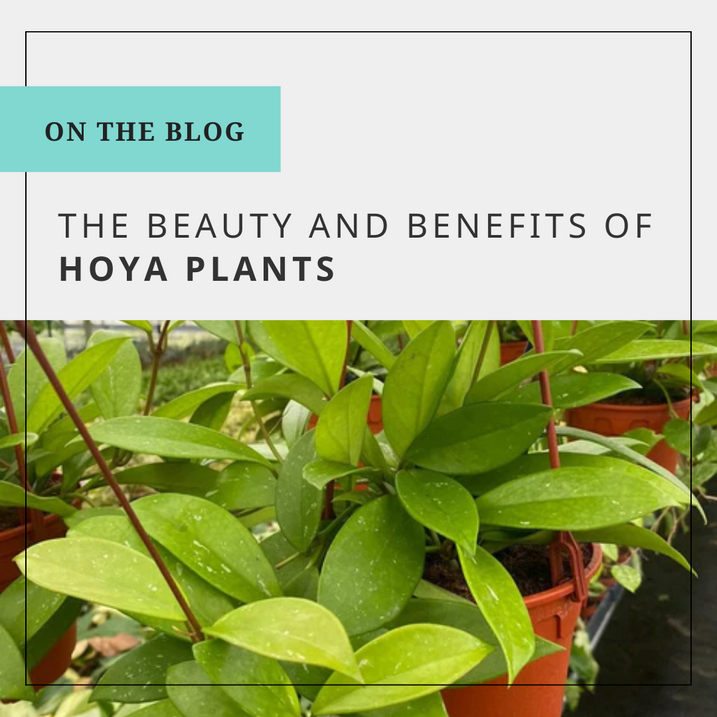Hoya Plants: Beauty and Benefits of this Low-Maintenance Houseplant
If you're looking for a houseplant that is both beautiful and easy to care for, look no further than the Hoya plant. These plants, also known as Wax plants, are a popular choice for plant enthusiasts because of their unique foliage and sweet-smelling flowers that bloom in the summer.
In this blog post, we'll explore some of the benefits of owning a Hoya plant and provide tips for keeping your Hoya healthy and thriving.
Benefits of Hoya Plants
- Easy to Care For: Hoya plants are low-maintenance and can tolerate a wide range of light and humidity conditions. They can survive in both bright, indirect light and low light, making them an ideal choice for those who don't have a lot of natural light in their home. They also don't require frequent watering and can tolerate some neglect.
- Air-Purifying Properties: Like many houseplants, Hoyas are known for their air-purifying properties. They can help remove toxins from the air, such as formaldehyde and benzene, which are commonly found in household products.
- Aesthetic Appeal: Hoya plants are beautiful and come in a variety of colors and textures, from the classic Hoya Albo Carnosa with its green, heart-shaped leaves and white flowers to the Hoya Silver Splash that produces thick, waxy, variegated green and creamy-white, succulent leaves. They can be grown as hanging plants, climbers or as tabletop plants, making them a versatile choice for any room in your home.
Tips for Growing Hoya Plants
- Light: Hoya plants prefer bright, indirect light, but can tolerate lower light conditions as well. Direct sunlight can scorch their leaves, so avoid placing them in direct sunlight for long periods.
- Watering: Hoya plants don't require frequent watering, so allow the top inch of soil to dry out before watering again. Overwatering can lead to root rot, so be sure to use a well-draining potting mix and avoid letting the plant sit in standing water.
- Humidity: Hoya plants prefer higher humidity levels, but can tolerate lower humidity levels as well. You can increase humidity around your Hoya by misting it with water or placing a humidifier nearby.
- Pruning: Hoya plants can grow quite long, so occasional pruning can help keep them under control. Prune back any leggy or overgrown stems to encourage new growth.
In conclusion, Hoya plants are a beautiful and easy-to-care-for addition to any home. They offer air-purifying benefits and come in a variety of colors and textures. With proper care, your Hoya can thrive for years to come. So why not bring some natural beauty into your home with a Hoya plant?








